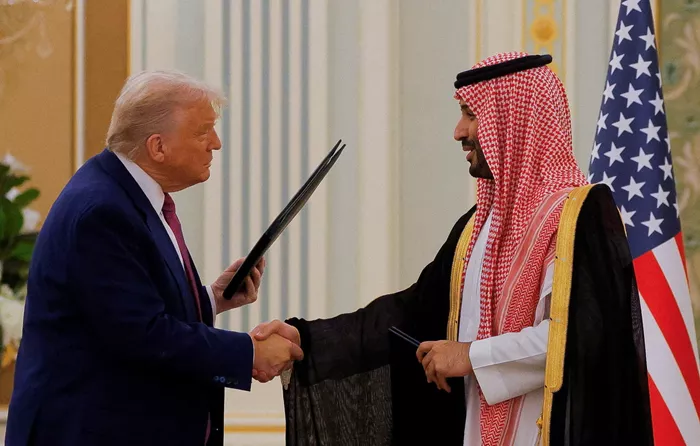President Trump’s recent visit to the Middle East has opened new doors for investment and cooperation between the United States and Gulf countries like Saudi Arabia and the UAE.
These nations have pledged huge sums of money — hundreds of billions of dollars — to invest in the US over the next decade. This move helps shift some financial power away from China and shows growing confidence in the American economy.
Big American companies such as Nvidia, Boeing, and Google are now working closely with Gulf investors. This partnership benefits both sides: the US gets new investments, while Gulf countries gain access to advanced technology, security help, and big markets for their goods.
After years of costly wars in the region, the US is changing its approach. Instead of sending troops, it’s focusing on smart investments and big military contracts that protect its interests without needing a heavy presence on the ground.
This helps America spend less on defense while focusing on its main concerns in Asia, especially regarding China.
A key part of this strategy is helping Gulf nations move beyond oil. The US supports their efforts to build knowledge-based economies with new technologies like artificial intelligence (AI) and renewable energy. This transition could make the Gulf a global hub for innovation and green growth.
However, there are risks. Much of the Gulf’s money comes from oil sales, so if oil prices drop, the promised investments might slow down. Also, Gulf countries have to balance investing abroad with their own economic needs at home.
Diplomatically, the US faces tough challenges. Negotiations with Iran over nuclear weapons are sensitive. Saudi Arabia worries that any deal with Iran could weaken US security promises.
At the same time, efforts to build peace between Saudi Arabia and Israel face obstacles related to the Palestinian issue. If these talks fail, it could weaken US influence and give rivals like China more room to grow in the region.
President Trump’s visit also showed new hopes for peace. Syria announced plans to join regional peace agreements, and the US hinted at a near deal with Iran to limit nuclear weapons. The tone of diplomacy is becoming calmer, moving away from decades of conflict and violence.
The Gulf countries are changing too. Their leaders are focusing less on political freedoms like democracy and more on technology, tourism, and renewable energy. They are trying a new path that combines social reforms with modern, technology-driven governments. This could help reduce support for extremist groups.
Still, the future of these new agreements is uncertain. They depend on long-term commitments that may change with new US leadership. The Middle East is becoming a place where many global powers— the US, China, and Russia — compete for influence. Gulf countries are trying to balance relationships with all of them to protect their own interests.
In short, President Trump’s visit started a major shift in US-Gulf relations, mixing big investments with new diplomatic efforts. But the road ahead is full of challenges and unknowns.
Read more:


